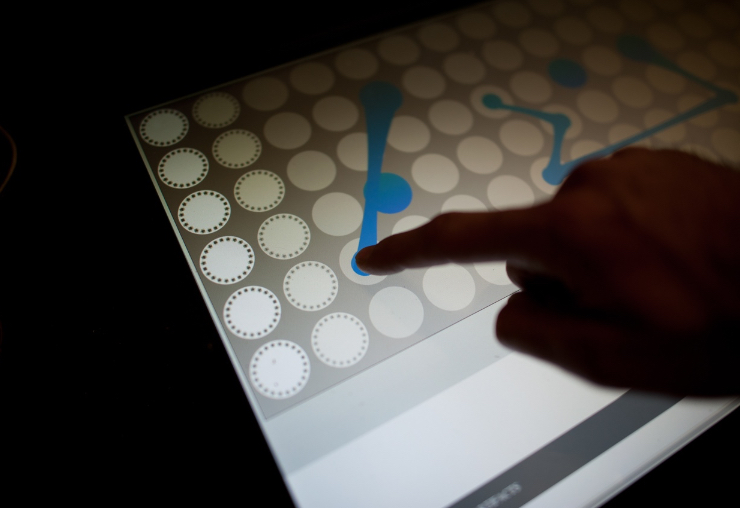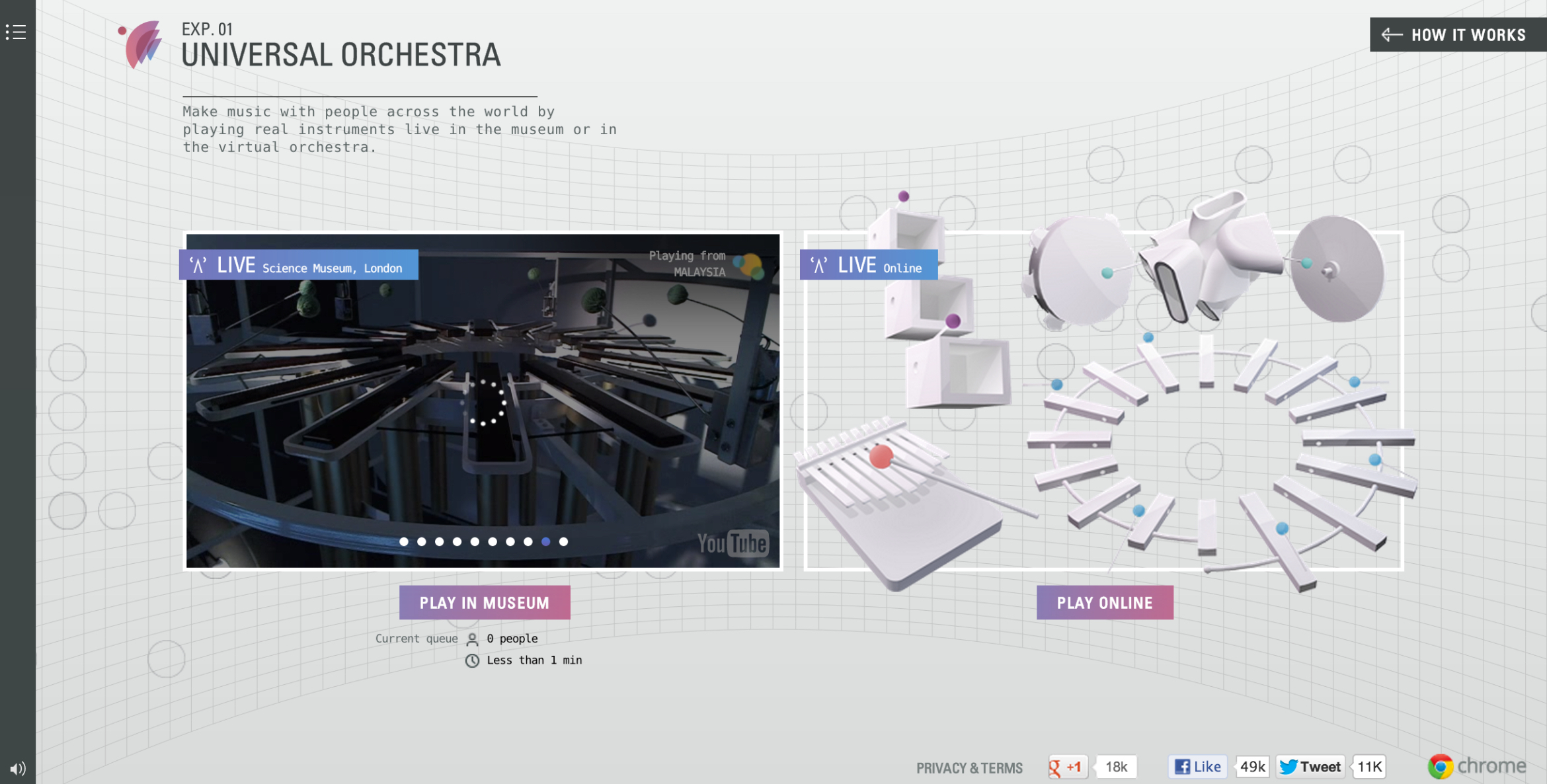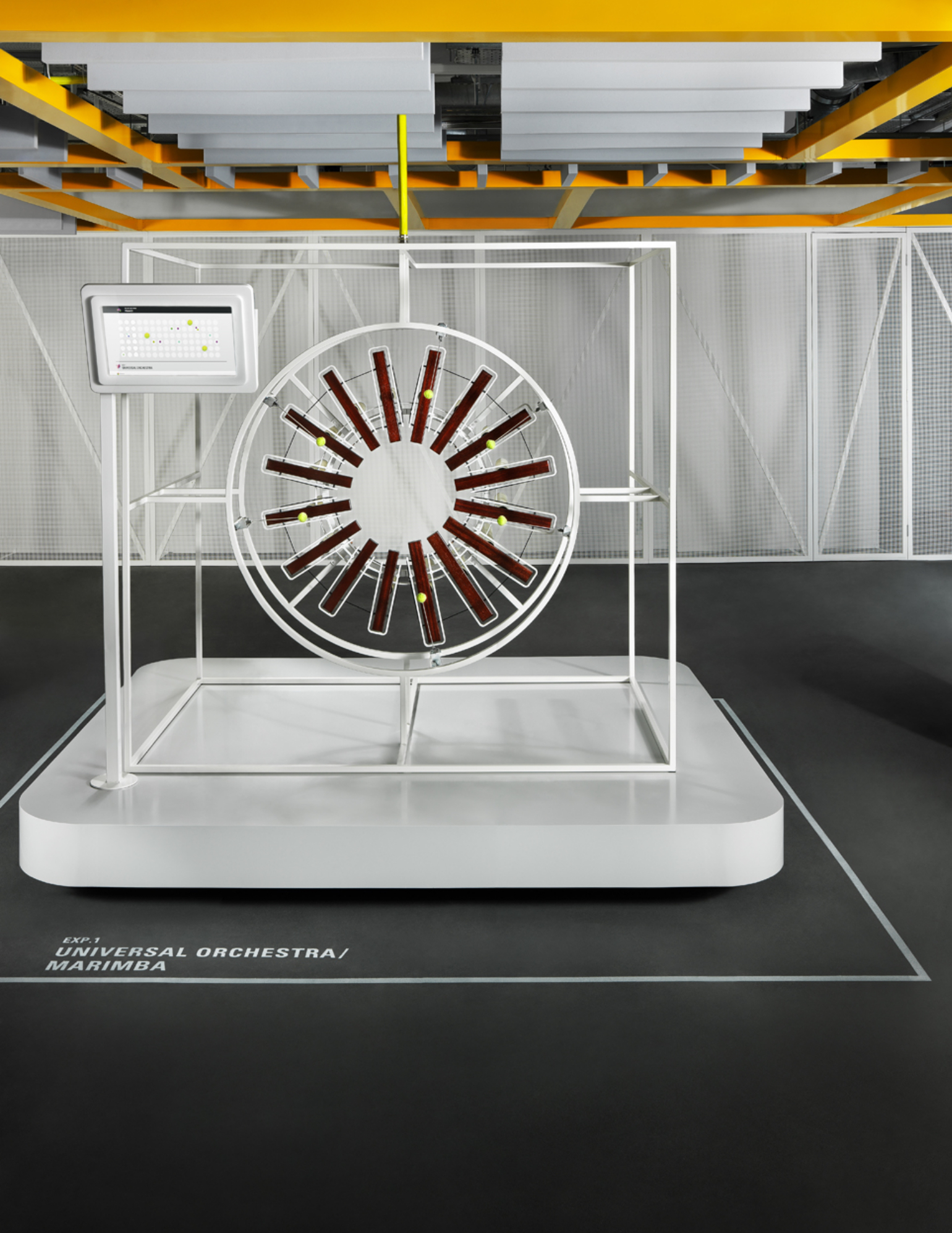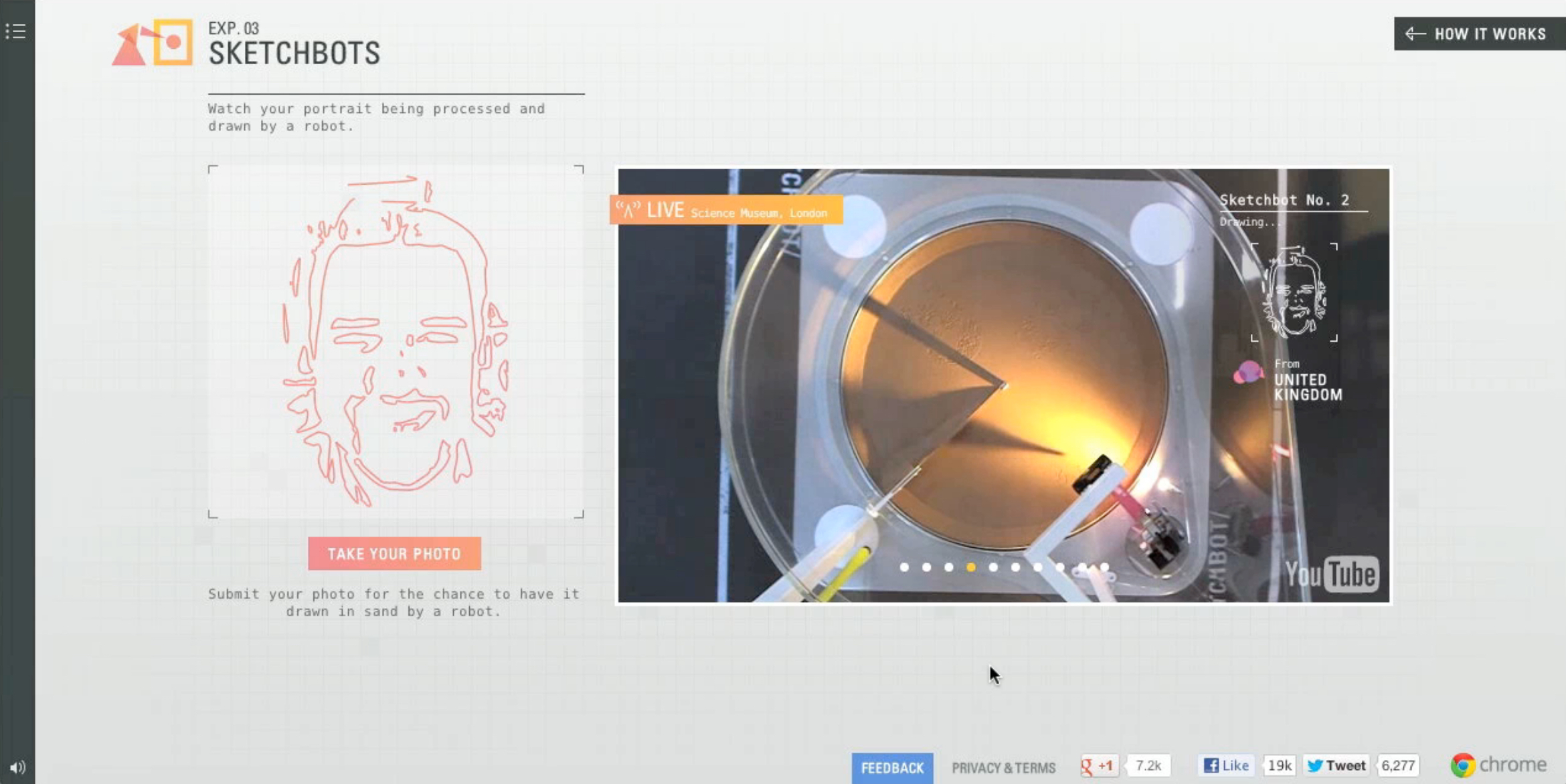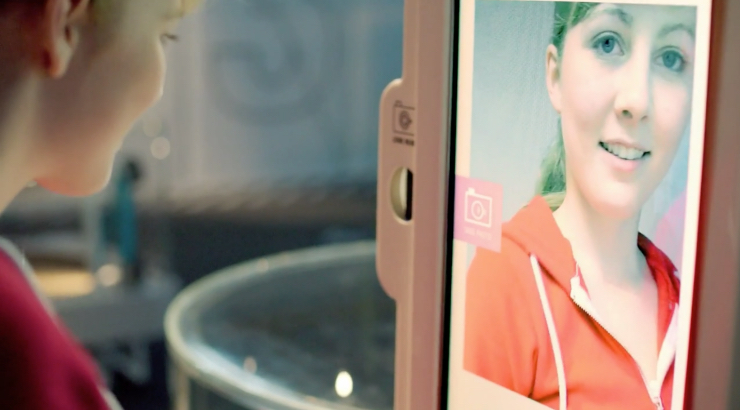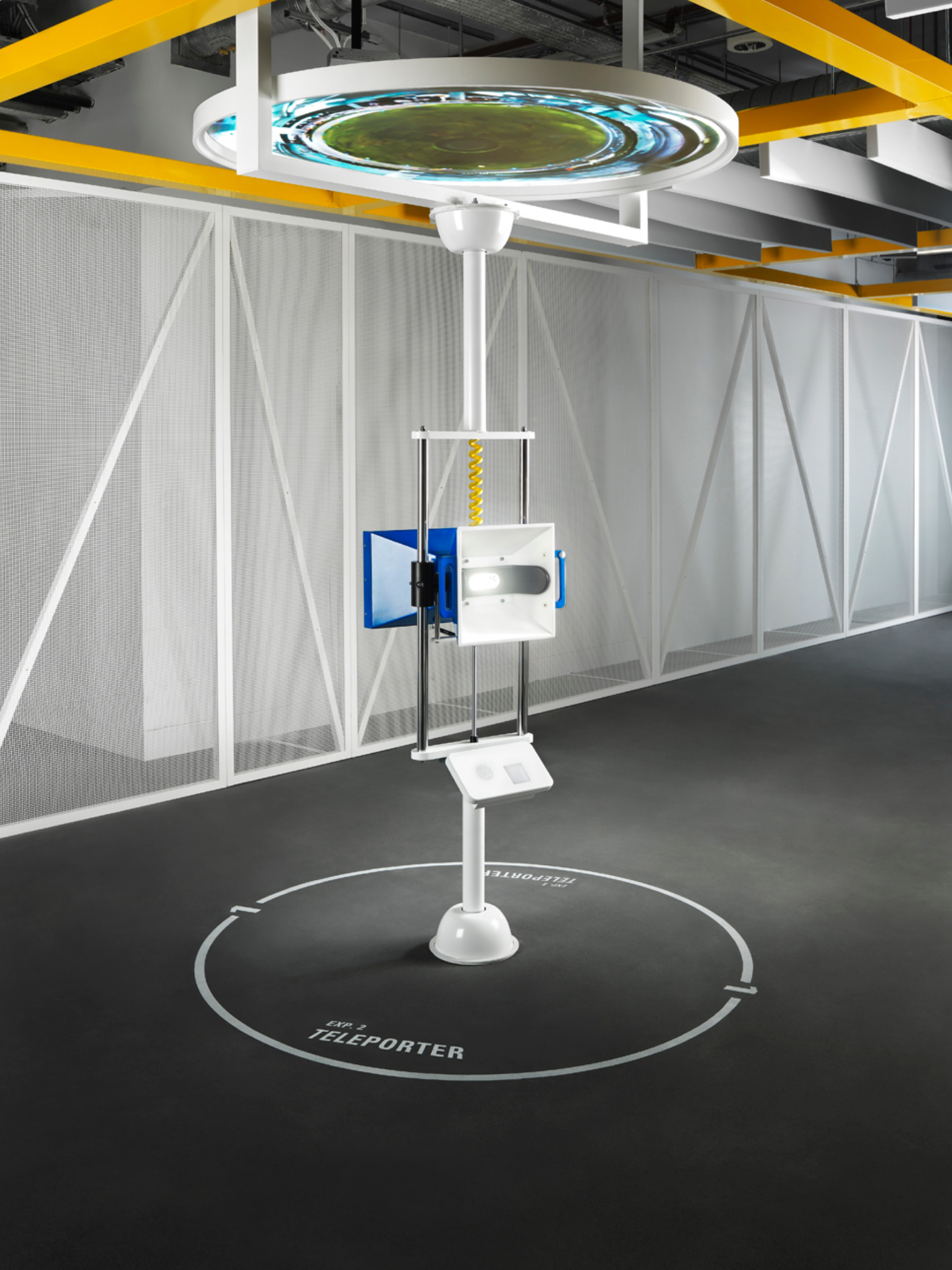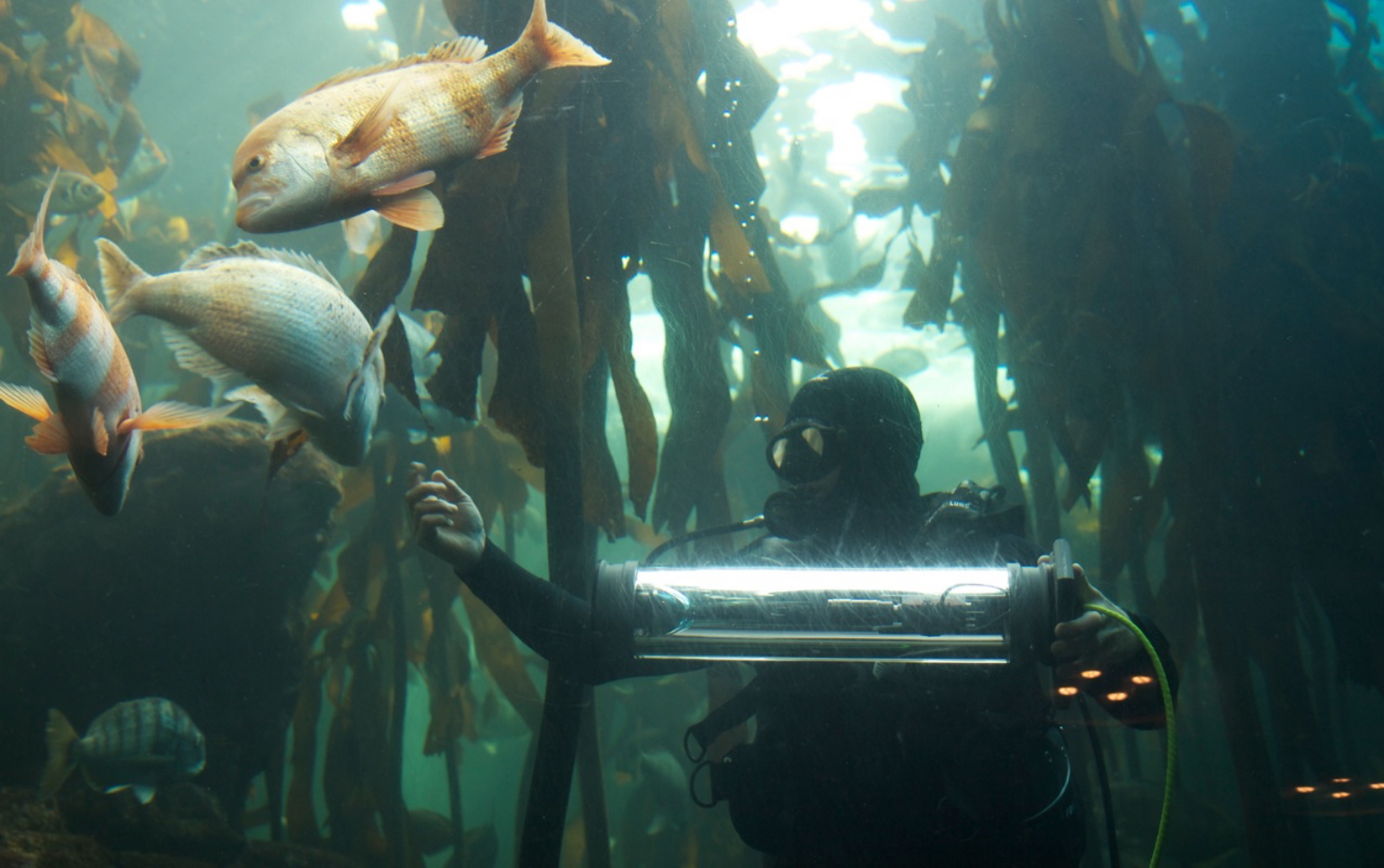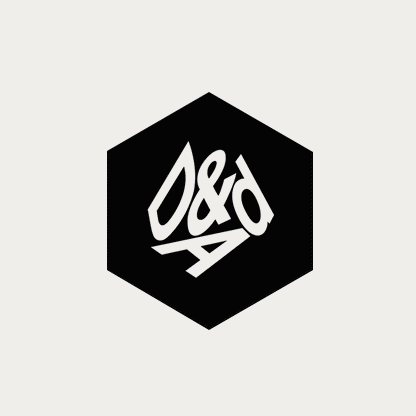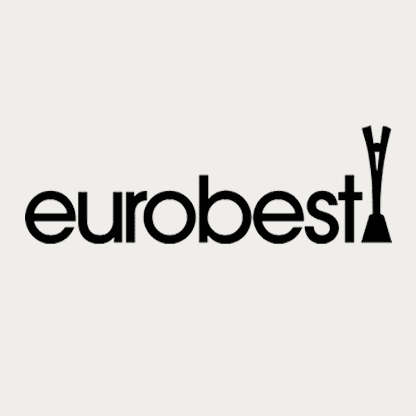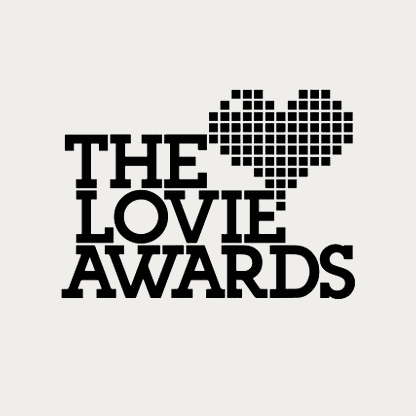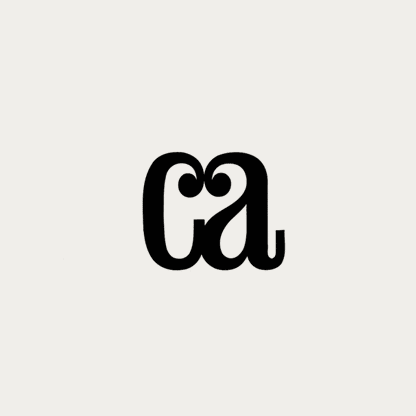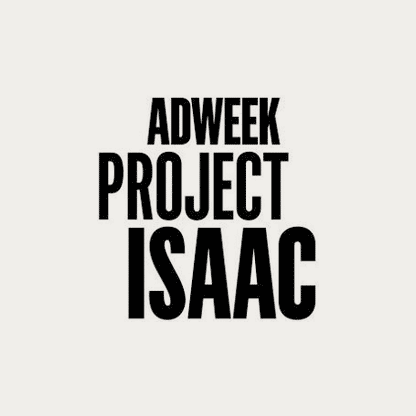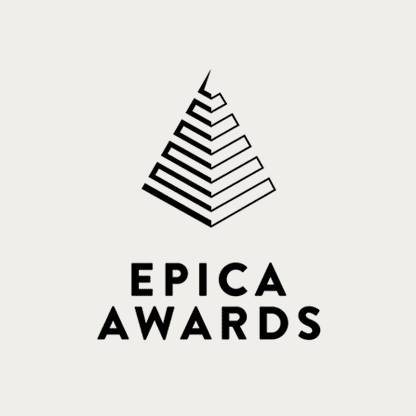Chrome Weblab
This exhibition about the magic of the modern Web ran for a full year in Science Museum, London. Museum visitors collaborated with millions of online visitors on a series of “experiments” designed to explain how the Web works—and inspire a sense of wonder at how its underlying technology allows us to explore, create and communicate with each other in new ways.
This work was a true collaboration where people from Tellart, Google, Universal Design Studio, MAP, B-Reel, Karsten Schmidt, and Fraser Randall came together to make it happen.
2012
MY ROLES
UX Design
UI Design
Prototyping
Software
Physical design
Custom hardware
Music through telepresence
The Universal Orchestra was an eight-piece instrument array that invited onsite and online visitors to play live music together. Half of the instruments were played by museum visitors and the other half by people online.
Making live music with people of different ages and skill levels, who are also spread around the world, is no small feat. We explored a multitude of interaction models, physical instruments and graphical interfaces to ensure people could create harmonious compositions together using live web connectivity.
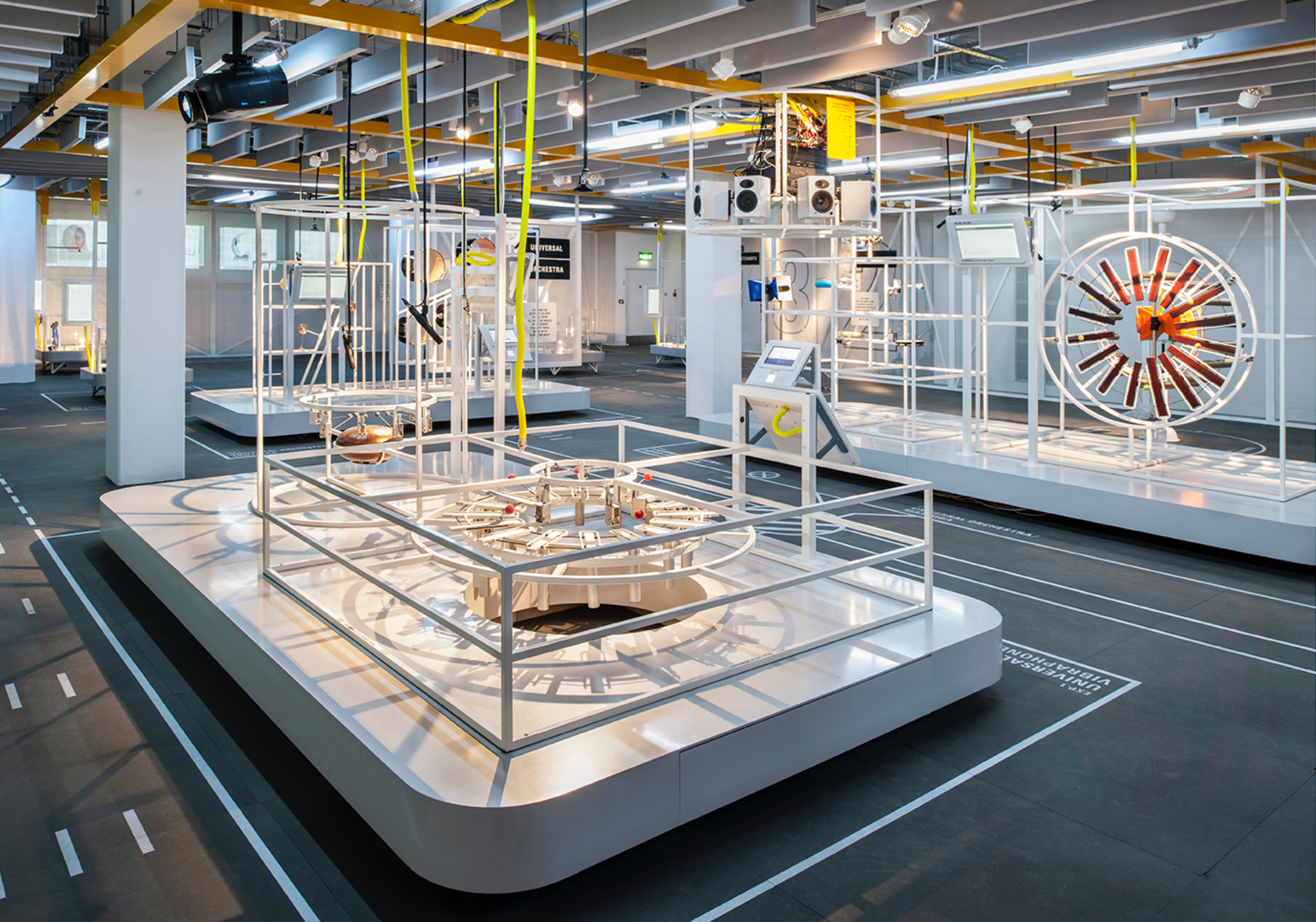
Translating digital to physical
The Sketchbot was a robotic system that transformed digital photos of visitors into sand drawings. The interaction was highly engaging and provided both online and onsite visitors with a unique portrait to share beyond their museum experience.
The exhibit educated visitors about the languages and processes that machines use to translate digital information into physical outputs.
During museum opening hours, half of the Sketchbots drew portraits of visitors in the museum, while the other half drew people who submitted their photos online.
Acquired in 2014 as part of the Cooper Hewitt National Design Museum's permanent collection, the Sketchbot represents a new paradigm of including open-source software and hardware specifications as part of a museum acquisition. Open-source materials allow anyone to not only recreate the original system but expand and build on it.

Making Web data tangible
The Data Tracer revealed the vast global spread of physical infrastructure that brings the Web to life. Visitors used Google's image search to search for content. The exhibit then projected a traceroute onto a large topographical map of the world, showing how their data travelled between multiple servers before appearing on their screen.
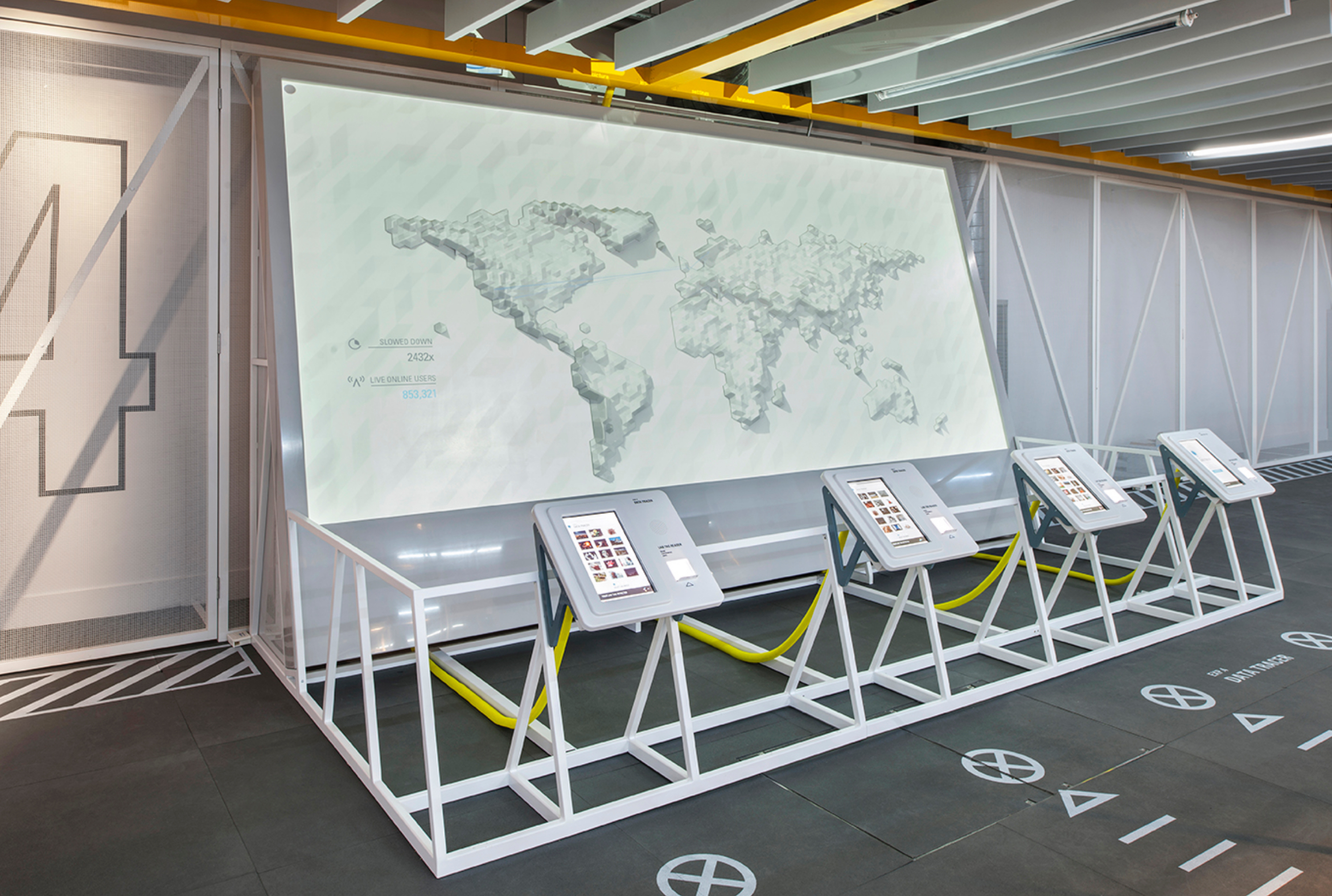
Immersive teleportation
The Teleporter exhibit consisted of a series of web-enabled periscopes that instantly transported visitors to remote locations.
Streaming video cameras were installed in various locations around the world, including an undersea kelp forest in South Africa and a bakery.
Tellart developed software and custom submersible cameras for shooting 360° spherical high-resolution video. Instead of waiting for a turn to control a remote webcam, both online and onsite visitors could fully control their own live stream concurrently, panning and zooming to explore the sites.
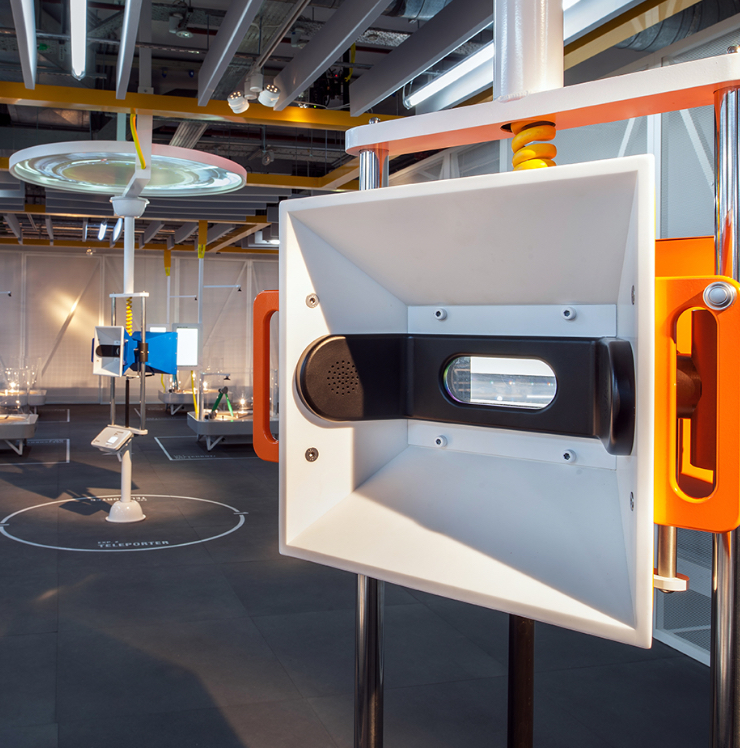
Privacy with personalization
Visitors entering the museum received a Lab Tag—a unique machine-readable optical tag—that allowed them to interact anonymously with the exhibits while maintaining a persistent identity. They could later retrieve and share all the content they created, from musical compositions to portraits, using a simple home webcam.

Shared presence at massive scale
The Lab Tag Connector's large-scale glass wall served as an introduction to the exhibition, showing museum visitors the scale of the exhibition's online participation and creating a sense of social presence between online and onsite visitors.
The Connector was used to create compelling educational visualizations of user geography, Web Lab activity and other statistics. These large-scale visualizations were created by combining digital projections with physical drawings on glass. Our custom-built dry-erase mechanism drew ink lines and then erased them, minimizing materials waste.

Highlights
- 5.1M views of the launch video
- 570K visitors to the museum exhibition in London (+14% target)
- 400K views of the educational video (+26% target)
- 6.7M Online Visits from 196 countries (+34% target)
- 200+ Press stories
- 22 Industry awards across multiple disciplines
- 1 English Primary School inspired to create their own web lab!




